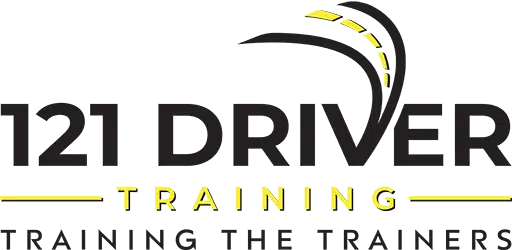In the realm of driving instruction, effective communication is paramount to delivering an exceptional learning experience to your students. As a driving instructor, you hold a unique responsibility to impart vital knowledge and skills to students, equipping them with confidence behind the wheel and ensuring they become responsible and competent drivers.
To achieve this, having a strong command of communication techniques is essential, allowing you to connect with your students, break down complex concepts, and guide them through practical learning exercises.
121 Driver Training, as a TfNSW and ASQA approved Registered Training Organisation, prides itself on delivering top-tier Driving Instructor Courses that thoroughly emphasise the value of effective communication in driver education. We recognise that exceptional driving instructors must not only possess technical knowledge and strong pedagogical skills but also be powerful communicators who can adapt to individual learning needs and preferences.
In this blog post, we will explore the importance of effective communication for driving instructors, showcasing how it impacts student outcomes and enhances overall learning experiences. Furthermore, we will delve into practical advice and best practices, courtesy of the expert educators at 121 Driver Training, to help you refine and optimise your communication skills as a driving instructor.
By mastering the art of communication, you can pave the way for more engaging, informative, and successful driving lessons, empowering you to lead students of all backgrounds to become confident and responsible road-users.
Expanding on the introduction, this blog article will explore various aspects of effective communication in the context of driving instruction. By examining these communication techniques and practices, we will demonstrate how honing these skills can make a significant difference in your students’ learning experiences and outcomes.
Developing Active Listening Skills
Active listening is crucial to understanding your students’ needs, concerns, and goals. By truly hearing and processing what your students are saying, you can provide tailored and responsive instruction. To enhance your active listening skills, consider the following practices:
- Give Your Full Attention: Focus solely on the speaker, avoiding distractions such as smartphones and external conversations.
- Display Open Body Language: Face the speaker and maintain appropriate eye contact, showcasing that you are receptive and engaged.
- Ask Relevant Questions: Demonstrate your understanding by asking for clarity or further information when appropriate.
- Provide Feedback: Share your interpretation of the speaker’s message, allowing for clarification and ensuring you’re on the same page.
Mastering Nonverbal Communication
Nonverbal cues play a critical role in conveying information and emotions in driving instruction. By being mindful of your body language, tone of voice, and facial expressions, you can create a more supportive and comfortable learning environment. To improve your nonverbal communication, try the following tips:
- Maintain Open Body Language: Keep your posture relaxed and welcoming, uncrossing your arms and facing your students when speaking with them.
- Be Conscious of Your Tone: Use a calm and modulated tone to convey authority and approachability without seeming aggressive or condescending.
- Utilise Facial Expressions: Ensure your facial expressions align with your message, smiling and making eye contact to foster a connection and convey understanding.
Utilising Clear and Concise Language
To minimise confusion or misinterpretation during driving lessons, it’s essential to communicate with clarity and precision. Incorporating the following practices can help you establish a clear and concise communication style:
- Use Appropriate Terminology: Familiarise yourself with driving-specific terminology and use it consistently in your instruction.
- Avoid Jargon: While industry terms are important, be careful not to overwhelm your students with excessive jargon. Ensure they understand the meaning of each term before employing it regularly.
- Speak in Short Sentences: Break down complex concepts into straightforward, digestible points, using straightforward language and speaking with concision.
- Provide Written Materials: Offer supplementary written materials, such as diagrams and process explanations, to reinforce verbal instruction and cater to different learning preferences.
Adapting Instruction to Different Communication Styles
Students have varied communication preferences, and a successful driving instructor must adapt their approach to accommodate these differing styles. Key communication styles and related adaptation strategies include:
- Analytical Communicators: These students appreciate logical and data-driven instruction. Provide precise details and clear cause-and-effect explanations.
- Directive Communicators: For students who prefer direct and succinct instruction, utilise clear, concise language, and focus on the most essential driving concepts.
- Expressive Communicators: Emphasise storytelling and real-life examples when instructing these students, who value emotional connections to information.
- Relational Communicators: Foster a more personal connection with your students, emphasising support and understanding while providing instruction that focuses on safety and cooperation.
Conclusion
A driving instructor’s ability to communicate effectively can significantly impact the quality and success of their lessons. By focusing on essential communication skills—active listening, nonverbal cues, clear language, and adaptive instruction—you’ll be uniquely positioned to deliver engaging, informative, and personalised driving instruction. Traits like patience, open-mindedness, and genuine empathy towards your students will not only make your lessons more enriching and enjoyable but also foster the growth and development of responsible, confident drivers.
Ready to take your career as a driving instructor to the next level? Look no further than 121 Driver Training! Our expert educators are dedicated to providing you with the knowledge, tools, and resources you need to succeed in the driver education field. Embrace effective communication within your instructional methods and make a lasting, positive impact on the lives of your students. Contact us today to learn more about our comprehensive driving instructor course and start your journey toward a flourishing career.




